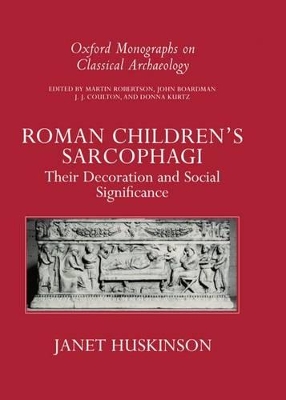Oxford Monographs on Classical Archaeology
1 total work
This book is the first major study of the themes which were used in the decoration of sarcophagi made for children in Rome and Ostia from the late first to early fourth century AD. It provides a selective catalogue of examples of each type, followed by discussion of how these fit into the general pattern. This allows certain themes to be identified which are virtually exclusive to childre's sarcophagi.
The second part of the book discusses the choice of subjects and how these reflect the standing of children in Roman society: to what extent, for instance, was childhood shown as a differentiated stage of life, or was it dominated by aspirations of the adult world? How is the death of a child treated in art? There are separate sections on the role of workshops and customers in the development of child-specific imagery, and on material from the early Christian era, providing some interesting
differences resulting from differing attitudes towards children and beliefs about life and death.
The second part of the book discusses the choice of subjects and how these reflect the standing of children in Roman society: to what extent, for instance, was childhood shown as a differentiated stage of life, or was it dominated by aspirations of the adult world? How is the death of a child treated in art? There are separate sections on the role of workshops and customers in the development of child-specific imagery, and on material from the early Christian era, providing some interesting
differences resulting from differing attitudes towards children and beliefs about life and death.
